Introduction
When working on Part 5 different text alignment, font types and/or typography and ways of displaying a written document came to mind. I was thinking to make a visualization of my PP, which can become a work in progress to develop further after this course ends. I felt a need to move away from the long document that also presents a body of work (visuals), in between the written paragraphs. I learned in my making that I enjoy research (I am by nature energetic, inquisitive and a bit of an activist) I can easily cross disciplinary boundaries to learn/read from other disciplines, be it science, music or literature. The world of mycorrhizal networks empowered me to explore more and not be fixed on one idea of understanding or sensemaking in my making or creative practice. I have learned that in my making I seek connections, which can be realistic or abstract. This was further encouraged during a session with tutor B Eccleshal on Research. (2h workshop on What is Artist Research) My biggest constraint was how to create such a work, as it seems one needs some design skills to use more than a Word-based program.
I believe that by using a stronger visual representation the impact of understanding the project for any viewer would be stronger in the sense that it will almost synthesize large amounts of information as well as engage on an emotional and aesthetic level. The image below is a strong motivator for using visual representation as part of my own research. This image below strongly supports an abstract concept and how it became a visual metaphor for health.
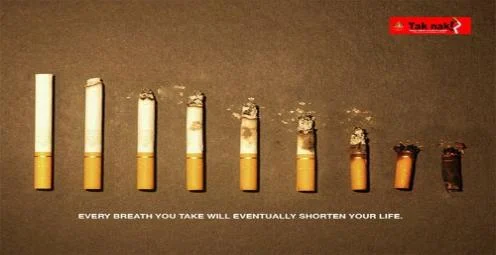
I looked at the following works and artists for ideas and to start planning my own work:
Visual Research ideas I considered
- Artist type book – foldout style was considered
2. Brainchart and or Whiteboard style – but I also want to consider the aesthetic and not have such a graphic display of words and images. I worked on a whiteboard as well as a Jamboard on Google.
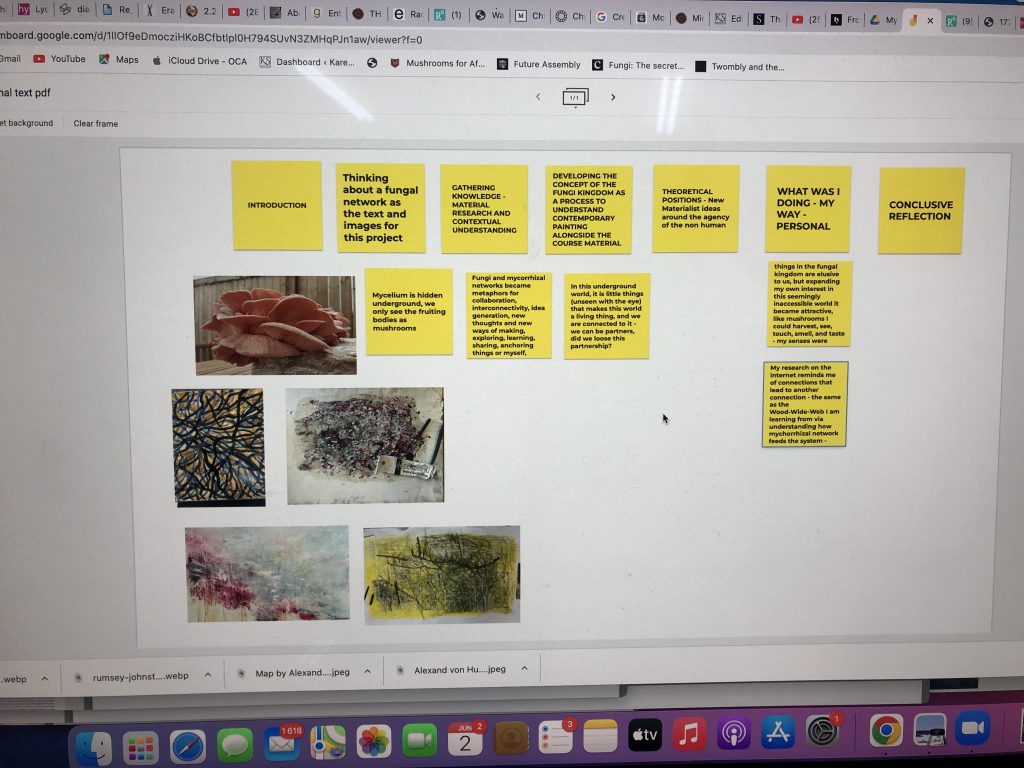

3. The Talmud layout – like this. (Prompted by ideas of tutor dr B Eccleshall in an earlier group session around Artist Research. How to do this seems to be a problem for me – lacking skills to do this form of typography.
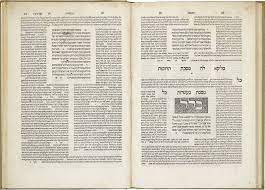
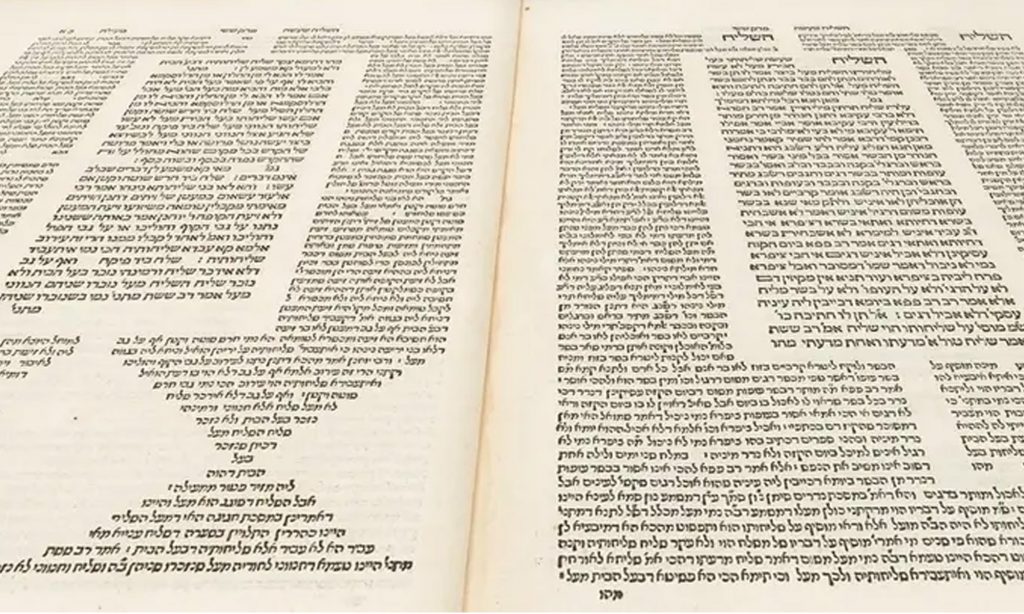
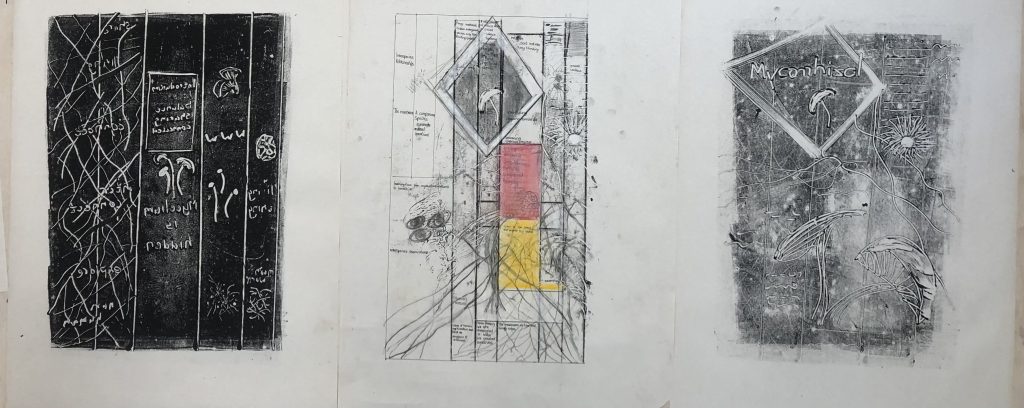
I talked to a fellow student who studies Graphic Design about layout and the type of program I would need to create a similar layout as in the Talmud above. I considered making a design with Monotype and collage printed work onto it. He will be willing to create a pdf of the design, using a specialised program and following my layout ideas.
4. Map ideas Alexander von Humboldt’s drawings of maps and visual scientific illustrations
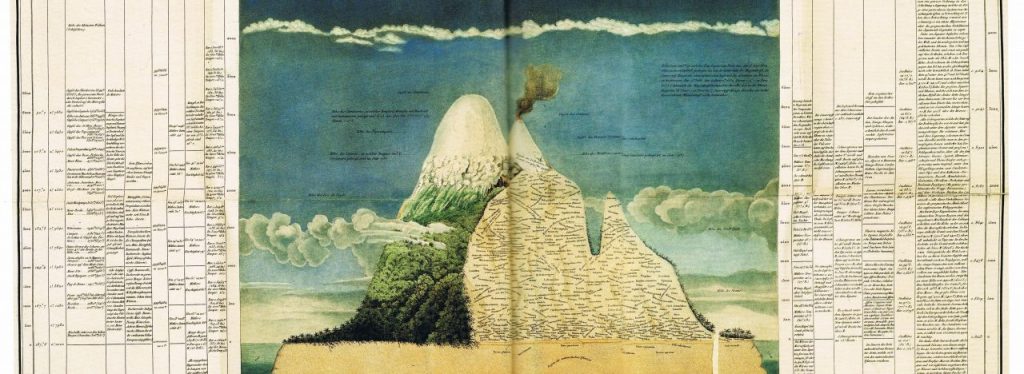


Humboldt’s major scientific contribution was realizing the interconnectedness of climate, geography, nature, and human societies..What’s often omitted, however, in discussions of Humboldt’s scientific legacy is the role that his pioneering maps and scientific illustrations played in shaping his thinking. By creating visualizations of data that had previously been bound up in tables, Humboldt revealed connections that had eluded others, says historian Susan Schulten of the University of Denver. “He’s really a visual thinker,” Schulten says. I learned that Humboldt was a key inspiration for Charles Darwin: “Nothing ever stimulated my zeal so much, as reading Humboldt’s [travelogue] Personal Narrative,” Darwin wrote. Darwin’s vision of nature has come to be seen as one shaped by fierce competition in the struggle for survival. Humboldt’s conception of nature, in contrast, invoked balance and harmony: an integrated whole arising from the interplay of countless elements in the living and non-living worlds.
Scientists before him had used maps and illustrations primarily to describe and summarize their findings, Humboldt used his visualizations to look for explanations – like artists have to look for questions/problems.
EXPLORATION AND RESEARCH TO CREATE A TEXT-BASED WORK
Why use the Talmud script/layout format?
I learned that the style of writing is called ‘hermeneutics‘ – a commentary with a series of references to the Torah. In a graphic way, the pages look interconnected, referring to commentaries and references – this is why visually it caught my interest and I can see it connected with my PP in the way the learning became a web of references and images. Visually I think there is a similar idea of working with multiple texts simultaneously which I could use to see how things (my body of work) co-exist and interact. (which again is very similar to the Fungal Kingdom). It also reminds me of my own studio – becoming messier – things all over the place, but they are all part of this bigger thing – my Parallel Project. My personal interest is around what is seen as permitted and what is seen as ‘secret’ and how this influenced the Hebrew alphabet and writings, which should also be seen as ‘figurative’ and poetic elaborations. Later when I read about the work done by the artist, Sharon Kivland (see insert below) I realize how text and words manipulate or deconstruct.
I realise that new techniques of writing can be used outside the scope of literature, but still, be about writing and text. I can imagine work that refers to appropriating the Talmud but also becoming a reconstruct of it.
Insert from an earlier blog: Dr Eccleshal, in a recent OCA group session, recommended that I look at the work by his PhD supervisor, Sharon Kivland. I found a book that immediately drew my attention as it relates to ideas I have with our Fungi Collaborative work, Involution, 2022. This work is called, Its Foul Weather in us All, which I learn is appropriated after the work of Marcel Duchamp when he in 1919 sent his sister a wedding present from Buenos Aires. He proposed that she leave a book outside, at the mercy of the elements, to be wind-warped and roughly read by its environment. It was referred to as the Readymade Malheureux. What I understand from the work below, is that it is based on The Tempest. All participants received a copy and were instructed by the Italian artist, Ricardo Boglione, to leave the work outside in the weather. I like that so many things happened there – the books would become warped, soggy…. not read or cared for or kept on the bookshelf. Time, duration and the elements in nature would change it. I see possibilities for our Involution work to be done. This also motivates my idea to use text as a way to reconstruct my PP, or even deconstruct. Duration and time are the things of nature that make me feel small, I learn this from my experiments with growing mushrooms as food and possible art making.
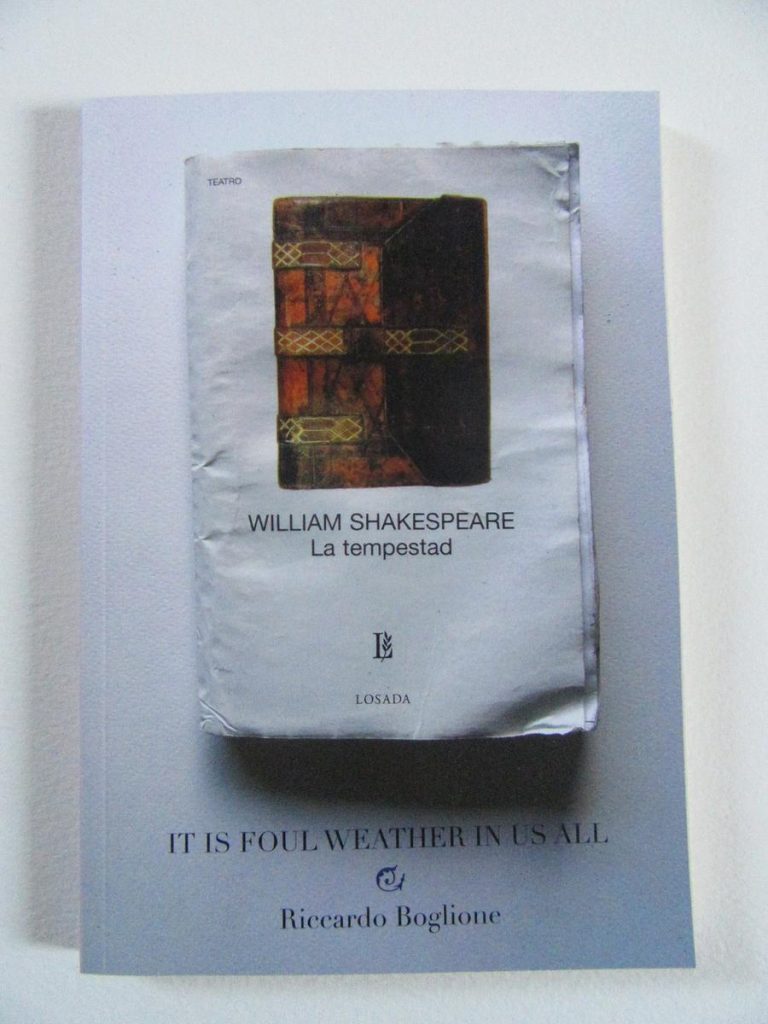
It makes me think about intent and my own WHY. Christopher Frayling refers to words spoken by Picasso about his Les Demoiselles d’Avignon: “…when I paint, my object is to show what I have found and not what I am looking for. In art intentions are not sufficient and, as we say in Spanish, love must be proved by the facts and not by reasons…” To Picasso it was about visual intention as a maker.
I later learned that the fact that this piece of literature (sacred writings on the Torah or old testament Bible) is representative of more than a thousand years of Jewish thought. I understand that the foundations were laid whilst the Jews returned as exiles from Babylonia, in the middle of the fourth century BCE. It is seen as a supplement to the Bible and more of an intellectual commentary. As a work of literature, it is a classic about culture and history.
A good read to consider for later explorations was shared with me by dr B Eccleshal:(https://acg.media.mit.edu/projects/thesis/DSThesis.pdf)
It becomes clear that I either need a design-based program to create my idea of using the Talmud outlay or create my own generic outlay by hand and typewriter/printing. Design programs is expensive and it also seems that I will have to learn how to work such a tool, which could be time-consuming and not easy to use before I could even think of printing a pdf file.
I can consider collaborating with an OCA student, but there is a time constraint with regard to being ready by the Assessment date. The best plan I could come up with was to acquire a typewriter. On Monday 8 August 2022, I found a Vintage typewriter close to our village and now I can start working. (I had to order a new ribbon and this set back the making for a while. Below is an image of the machine as well as the first work I did on it. I look at this as the map or layout of the PP.
VISUALIZING IDEAS
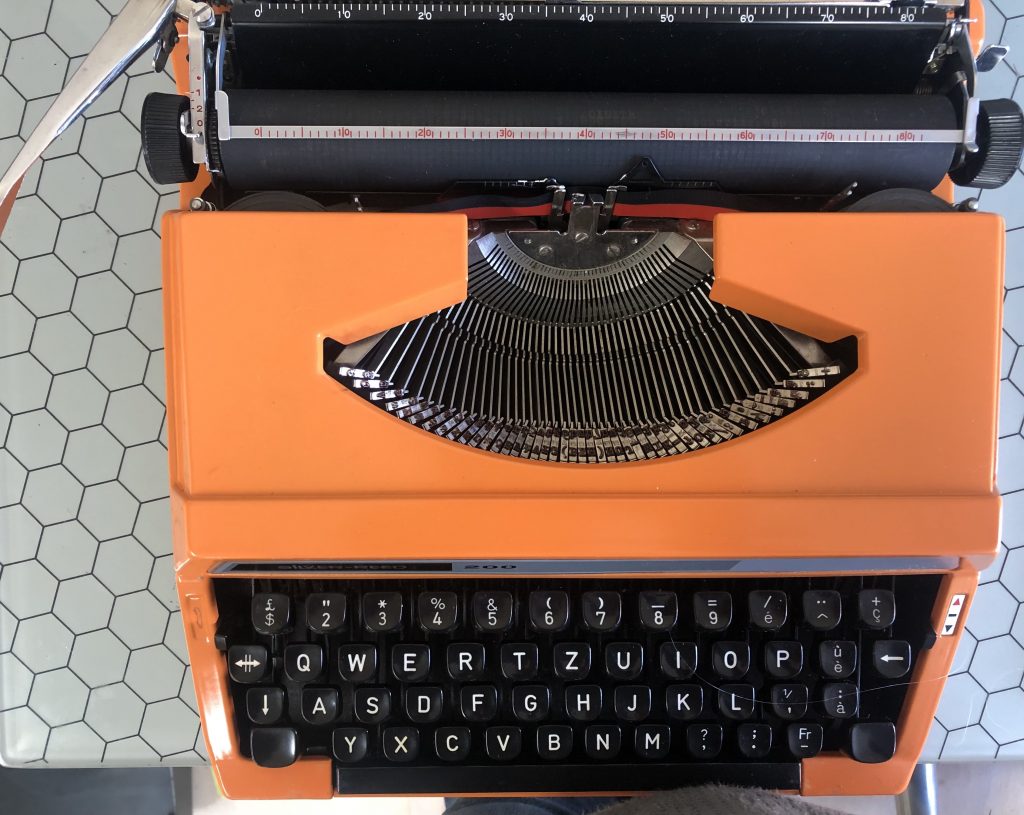
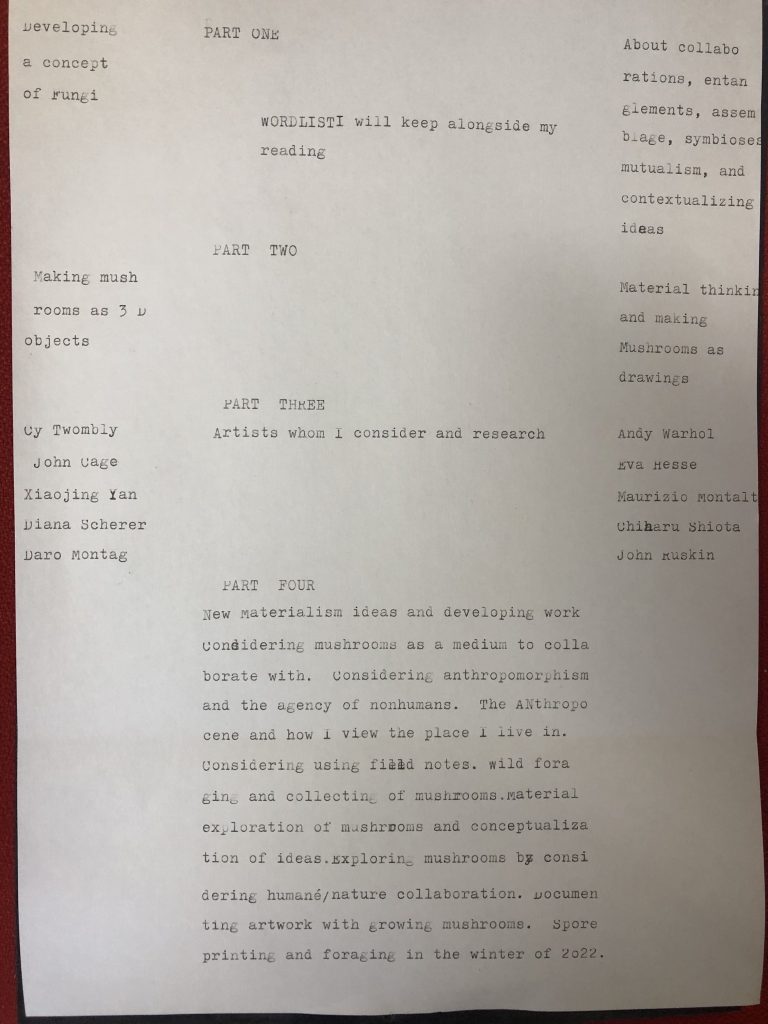
Printing options were explored – an idea of how a work could be presented is shown below.

I also looked at Collagraph printing, as I have some experience with Intaglio printing. I worked on an A4 board and would like to work on a bigger plate. During this research, I came upon a printer that uses collage onto a perspex plate and I could also consider to explore this method. Printing has always been a process I admire and would love to explore more. I live in a town where there are printers to learn from and work with.
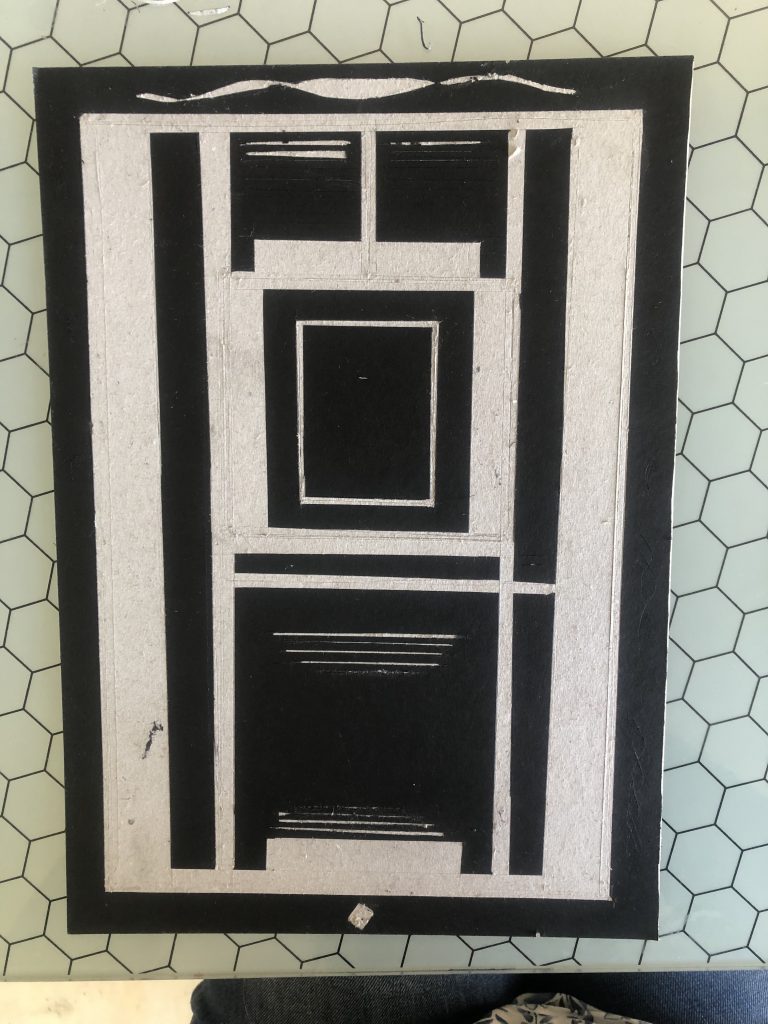
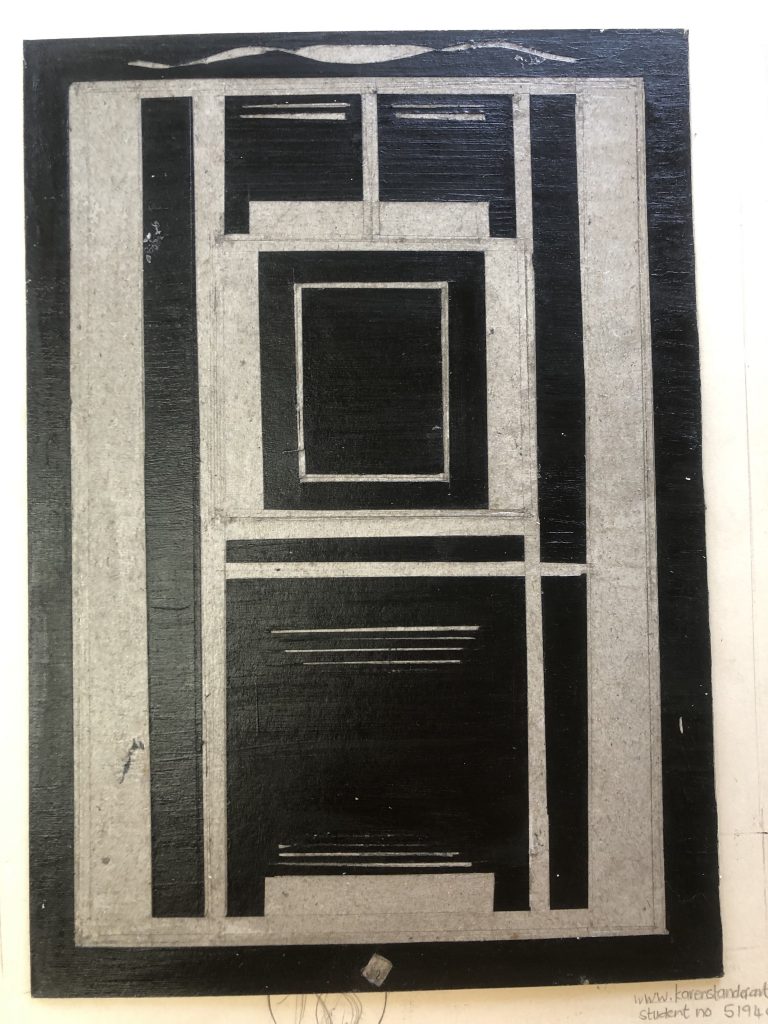
An idea was also considered to collate all the work as small fragments into one bigger work: below is an exploration of this idea, by placing all the ideas onto one bigger work – a collage form.
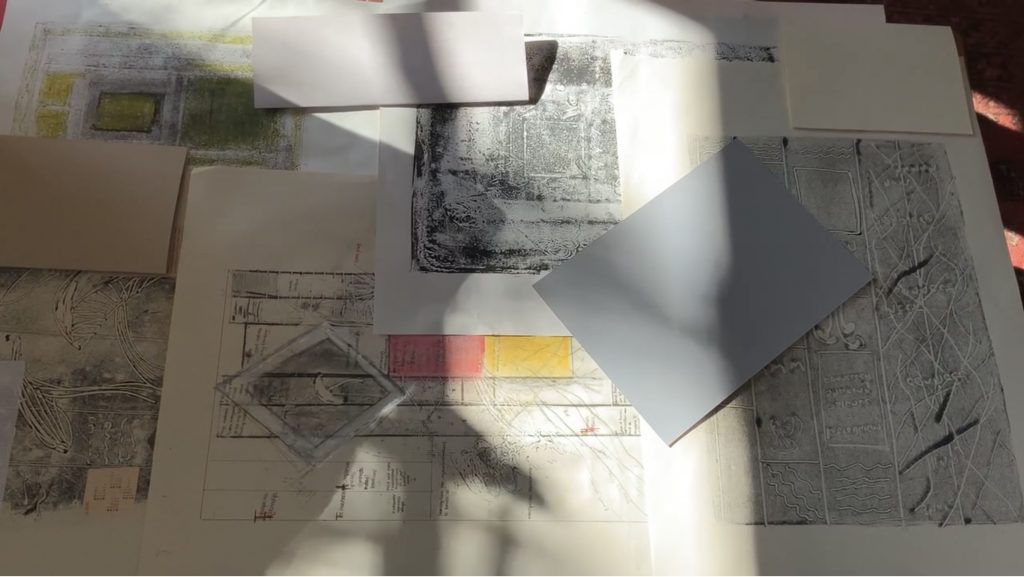
CONSIDERING THE USE OF VIDEO WORK AS A PRESENTATION
I came upon an application that seems quite intuitive and could help me make video presentations of my work for the upcoming assessment.
It is important that I look at the quality of the images I will use. I think the use of technology such as Zoom, Cellular phone images, screenshots, small/short videos on Youtube and or soundtrack and the above app (mmhmm) are great enablers to bring the benefit of visual representation into my work. It worked great as an enabler to collaborate and learn during this course.
Artists I researched around their use of a language other than what the study material suggested:
Glenn Ligon
I found the work of this artist on IG which was posted by the Carre d’Art Museum, a French institution. I learn that this artist started using text in his work early on and that the use of stencilled words become his trademark. For this artist painted language highlights the social and political value systems he portrays in his work. He is strongly influenced by his interest in the work of James Baldwin I read. Below are images I used from his own website. It is clear that it is not always about being able to read the text in his work – he uses accidents, errors and flaws to let words float or bleed beyond the margins. The work is personal and emotional and I read it in this way. I feel I see something of Cy Twombly in these works – the exploration of marks and words beyond understanding or meaning. The word engaging comes to mind when I view his works. I was touched by his ideas about Blackness in this world, I feel it connects to the pain I see in my own country and how we need to engage with these feelings in order to move away from racism.
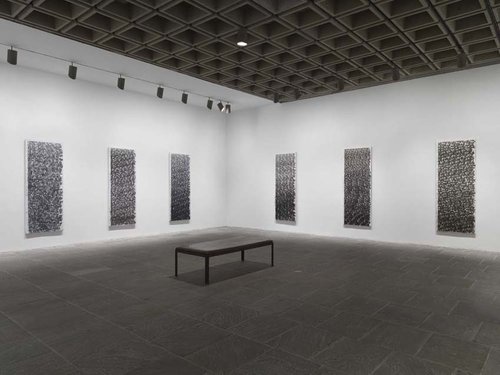

Mimi Joung
A ceramist artist ( Korean) who creatively used words also capture my attention. She made Moon Jars out of words. It is clear that language and literature are important in her work. The work below is called A Lot of Goodnights. The artist reflects on the meaning of saying goodnight, even how the earth says good night through the rising moon. I love the quietness in the work. ( I also love gazing at the moon) On IG she shared a video of her making such a vessel, (the orange one in the image below) she calls it, A Lot of Goodnights in Orange, 2022. This work is almost a layering of words as the continuous process of building and forming the shape with cut-out words (ceramics) becomes the work. I like the repetition in the process of making and using words or text repetitively. On her website I read the following comment: The entwining nature of collaboration is both liberating and suffocating, I really think this is so true for us as human to learn to be interdependent and less about ego.
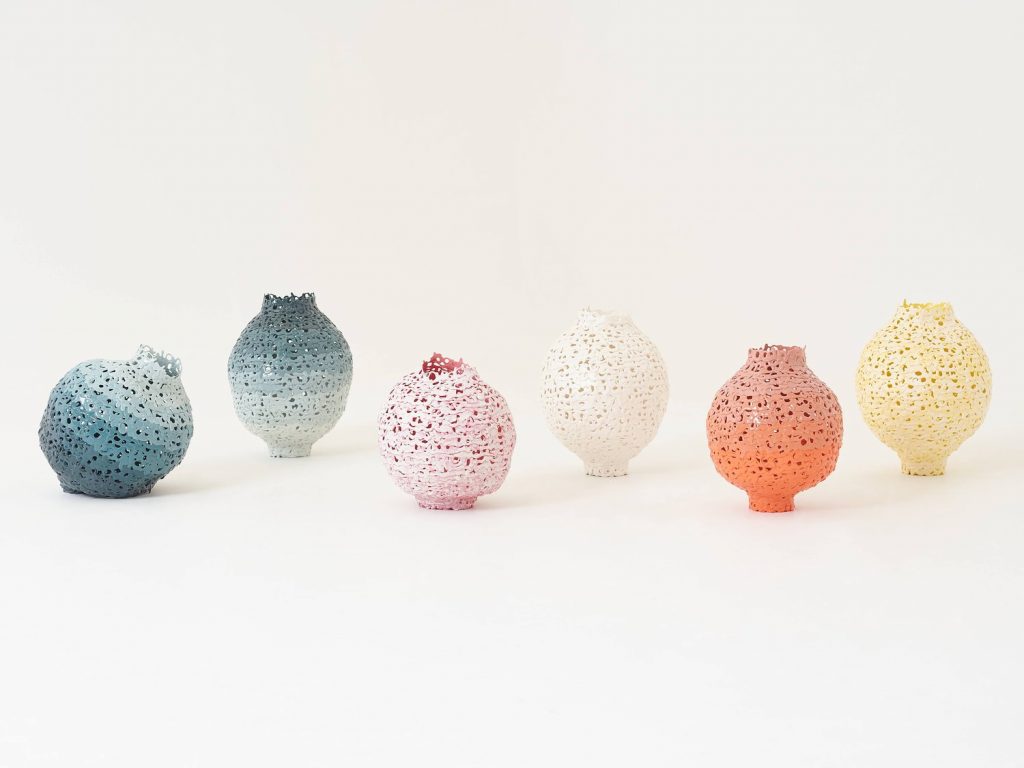
Thinking about questions that arose from this project:
Reflecting on the work I have done, as well as the whole experience of having some time after to course to come back to my work before I send it for Assessment, made me consider the idea of ‘composting’. This was prompted by an article I read in the June Fine Arts Newsletter of OCA. I could literally allow for the dust to settle on all my research and where I want to go from here. I could consider developing more work, or re-work others and planning new work.
I value my blog writing even more now when I look back at completing this course. My tutor mentioned using my visual research as an enabler in telling the research. I feel my knowledge about the Fungal Kingdom has grown deeper with my personal encounters or engagement with living mushrooms and lichen. This created the opportunity for more layers of depth and meaning in my research about it. and a possibility of building on the body of work I have started which can become more engaging or meaningful to viewers. I also feel that I am free to now look at the documenting part of the work (written and works created) as learning and understanding the subject, but also to move away into my own imagination and state of mind that happens when trying to collaborate with the non-human and spending time in nature as my environment to observe and reflect on.
I believe that by working on the PP I was confronted with my own ideas of nature, human and non-human interaction, ideas around masquerade, individualism, symbioses, embodiment, othering, networking, deconstruction, time passing and connections between.
I have become more intrigued with repetition as my own body of work in my PP developed. On notes of work by Mimi Joung, who is influenced by her collaborative artist , Bae, I read the following on her website: “Derrida tells us about an incessant, nostalgic searching. He demonstrates the desire to return to one’s origins, a longing for home, what he calls an ‘archival malady’ that, in spite of its preservative purpose, ultimately conceals memory in order to negate that which is discursive.” It made me think about my own practice and how reflection opens up ‘ new’ ways of looking at making and pushing me to continue developing or come to a ‘rereading’ or repetition out of the first attempt. It also became a place where the making process is more focused or one can say you experience a heightened focus.
Looking at collaboration opened up the possibility of learning, but also that it comes with new challenges which happen in a, (almost shared?) space between the collaborators. One might feel very vulnerable as well as liberated at the same time. Is it because we have lost the practice of collaboration due to individuality and a certain idea about authenticity?
I am thinking about taking this project further in my next level of studies and the questions I could still provoke from my learning. I believe a strong subject knowledge has developed in this project and that this adds to my contextual knowledge which is becoming part of my making. A question that arises is what sort of world I think my viewers would want to live in. I read somewhere about moving from the Anthropocene to the Symbiocene and think imagining a place that considers collaborative survival as the way to live makes sense. (https://issuu.com/bartlettarchucl/docs/summer21_final_issuu)